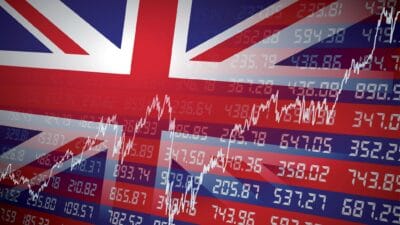I like the idea of buying passive income stocks and holding them for the long term.
To me, a stock suitable for generating passive income will be backed by a big business capable of paying enduring shareholder dividends.
I could hold the shares and take the dividends as passive income. Or I could roll the dividends back into my investments to help compound my gains.
Should you invest £1,000 in Hammerson right now?
When investing expert Mark Rogers has a stock tip, it can pay to listen. After all, the flagship Motley Fool Share Advisor newsletter he has run for nearly a decade has provided thousands of paying members with top stock recommendations from the UK and US markets. And right now, Mark thinks there are 6 standout stocks that investors should consider buying. Want to see if Hammerson made the list?
My preferred passive income stocks
Some of my preferred choices have seen weaker share prices lately. So I reckon it’s a good time for me to run the calculator over those investment opportunities.
For example, in the pharmaceutical sector, I like the look of AstraZeneca and GlaxoSmithKline. Both companies have steady underlying businesses that tend to keep on generating cash flow whatever the general economic weather. And that’s because people tend to prioritise purchasing medicines, however tough the times.
With its share price near 1,325p, GlaxoSmithKline’s forward-looking dividend yield is just below 5% for 2022. However, the company plans to split its operations into standalone Biopharma and Consumer Healthcare companies in 2022. Those plans are creating some uncertainty and the forward yield is set to drop a little because of the change. On top of that, the share price has been trending lower since the beginning of 2020 and that move could continue.
Meanwhile, with AstraZeneca’s share price near 7,494p, the forward-looking dividend yield for 2022 is around 2.8%. That’s quite a modest yield and there’s some risk the valuation could contract. That might happen if the rate of earnings growth declines, for example. Nevertheless, I’m tempted to buy shares in both firms for a long-term portfolio focused on passive income.
Branded fast-moving consumer goods
In the fast-moving-consumer-goods space, I’m keen on Reckitt Benckiser and Unilever. The companies’ ranges of branded food, cleaning and hygiene products tend to sell consistently as medicines do in the pharmaceutical sector. People love to keep buying their ‘essentials’ in good times and bad, and that tends to lead to solid and reliable cash inflow.
With the share price near 6,676p, Reckitt Benckiser’s forward-looking dividend yield for 2022 is just below 2.7%. And at 4,128p, Unilever’s is just over 3.6%. Both of those income streams have a multi-year history of incremental annual growth.
However, I’d describe the valuation of both companies as rich. And there’s a possibility the shares will move lower so that the valuation becomes fairer. If that happens, I could lose money on my holdings. Nevertheless, I’d put these two stocks in my passive income portfolio to hold for the long term.
My final passive income pick is energy transmission system provider National Grid. I see the firm’s regulated monopoly position in the UK’s energy network as attractive. And the sector is defensive and less prone to cyclical ups and downs than many others. There’s also a business in the US.
With the share price near 911p, the forward-looking dividend yield for the trading year to March 2022 is just below 5.5%. I think that’s attractive but National Grid carries a lot of debt, which could combine with regulatory changes in the future to threaten shareholder payments. Nevertheless, I’d add this one to my passive income portfolio.







